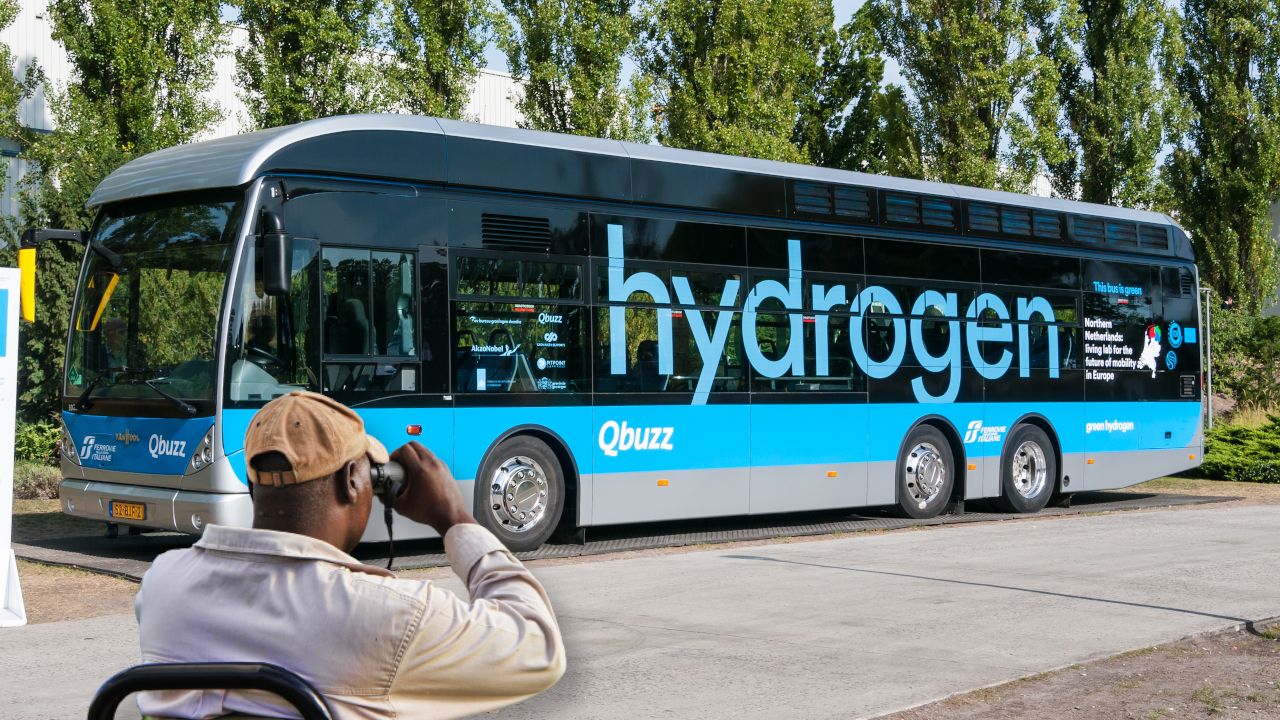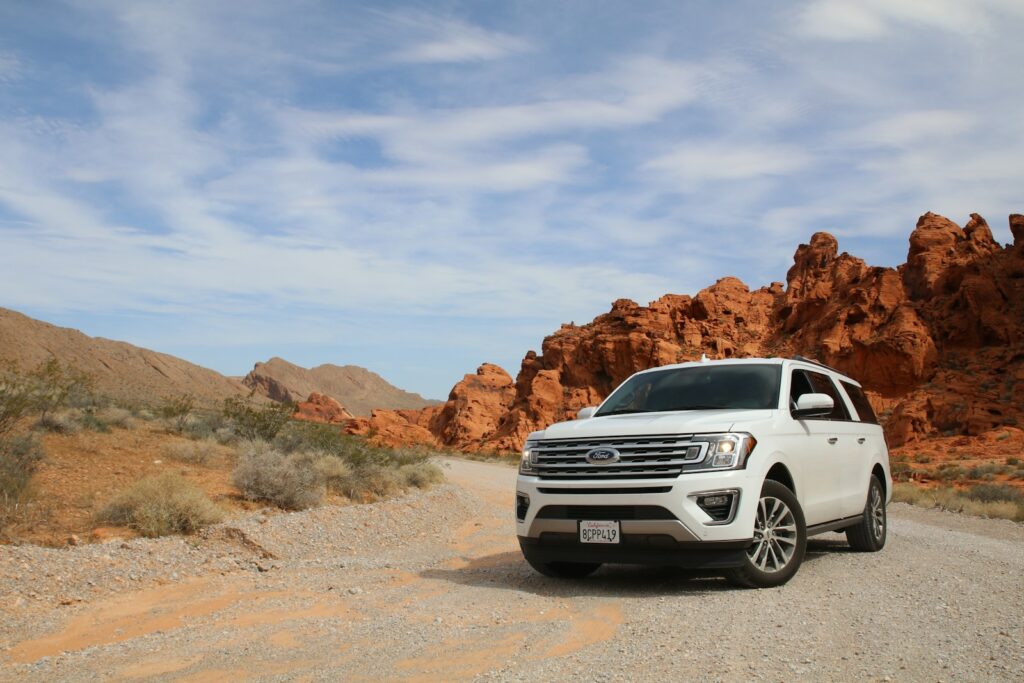
Hybrid vehicles have become a cornerstone of modern transportation, lauded for their fuel efficiency and reduced environmental footprint. Yet, beneath the promise of greener driving, a significant concern often looms for owners and prospective buyers: the longevity and eventual replacement cost of the propulsion battery pack. Unlike the familiar 12-volt battery in a conventional gasoline car, a hybrid’s main battery is a complex, high-voltage component, and its failure can lead to a bill stretching into the thousands.
This in-depth guide aims to demystify the intricacies surrounding hybrid battery replacement. We’ll navigate through the fundamental technologies that power these vehicles, equip you with the knowledge to recognize the early warning signs of battery degradation, and provide actionable steps to take if you suspect an issue. Our goal is to empower you with unbiased, data-driven insights, ensuring you can make informed decisions about your hybrid vehicle’s maintenance and long-term financial implications.
By thoroughly understanding these critical aspects, you can proactively manage your hybrid’s health, potentially avoiding unexpected expenses and extending the useful life of your vehicle. Let’s delve into the essential information every hybrid owner needs to know, starting with the very heart of the system: the battery technology itself.
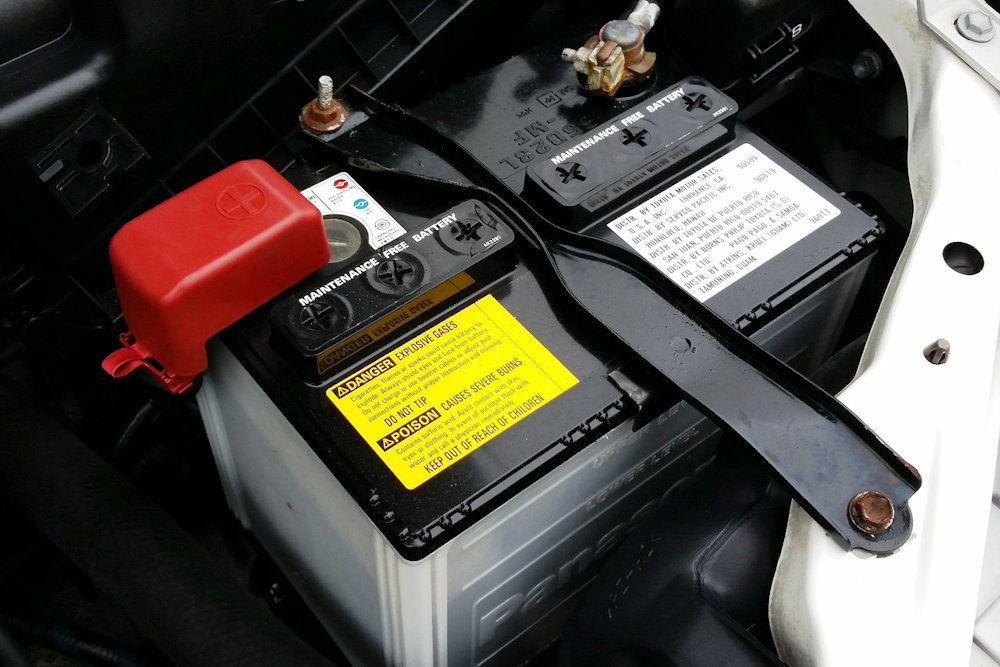
1. **Understanding Hybrid Battery Technology**
Most hybrid vehicles on the road today rely on one of two primary battery technologies: nickel-metal hydride (NiMH) or lithium-ion (Li-ion). These sophisticated power sources are fundamentally different from the standard 12-volt battery found under the hood of a traditional gasoline-powered car. Their specific characteristics significantly influence a hybrid vehicle’s performance and, critically, the potential cost of replacement.
NiMH batteries were widely adopted in earlier hybrid models and are recognized for their robust reliability and generally lower manufacturing costs. However, this technology comes with certain trade-offs. NiMH batteries typically exhibit a shorter overall lifespan and possess a lower energy density compared to their more modern counterparts. This means they can store less energy for a given weight or volume, impacting the vehicle’s electric-only range and overall efficiency.
In contrast, newer hybrid models increasingly employ lithium-ion (Li-ion) technology. Li-ion batteries offer superior performance, boasting higher energy density and a longer projected lifespan. This allows for greater electric range, improved acceleration, and often a lighter battery pack overall. The advanced capabilities of Li-ion batteries, however, usually translate to a higher replacement cost when the time comes. Understanding which type of battery powers your specific hybrid model is crucial; you can typically find this information in your vehicle’s owner’s manual or by consulting a qualified mechanic.
Read more about: Navigating the 2025 Car Warranty Changes: A Consumer Reports Guide to Protecting Your Used Car Investment
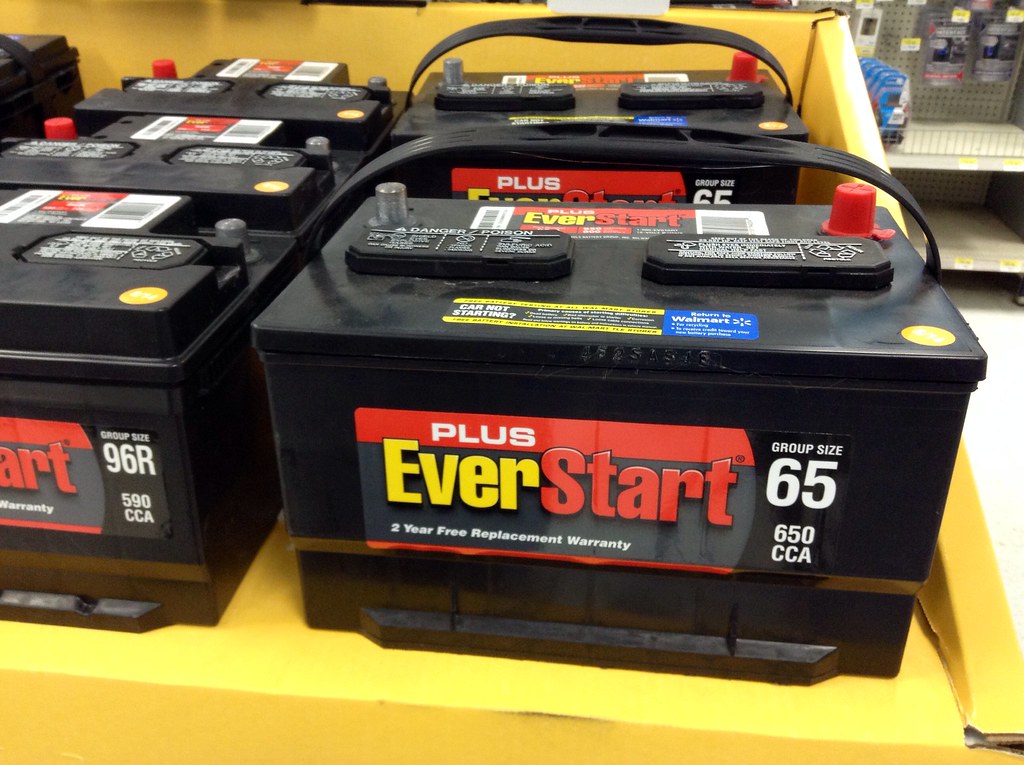
2. **When Will a Hybrid Battery Fail?**
One of the most pressing questions for hybrid owners and prospective buyers of used hybrid vehicles revolves around battery longevity: when can one expect the propulsion battery to fail? Unfortunately, providing a precise answer is challenging, as the lifespan of a hybrid battery can vary significantly from one vehicle to another and depends on numerous factors unique to each case.
While some drivers have reported battery failure as early as 70,000 miles, others have successfully driven their hybrids for well over 200,000 miles without experiencing any battery issues. Such wide variations underscore the difficulty in setting a definitive expectation. Many factors, including driving habits, climate, and maintenance, play a role in how long a battery will last.
Based on collective experience, hybrid batteries generally begin to pose a notable risk when they reach an age of 10 to 15 years, or once the vehicle has accumulated between 120,000 and 150,000 miles. It is true that anecdotal reports exist of batteries enduring far beyond these benchmarks, sometimes well into the 200,000-mile range. However, it would be imprudent to rely on these exceptional cases as the norm, particularly if you are considering a used hybrid and are operating within a strict budget. Additionally, it is important to remember that prolonged exposure to extreme temperatures, both hot and cold, can cause significant damage and ultimately shorten a battery’s lifespan, highlighting the importance of environmental factors in battery degradation.
Read more about: Hybrid Car Battery Woes: An In-Depth Guide for Savvy Owners to Avoid Thousands in Repairs
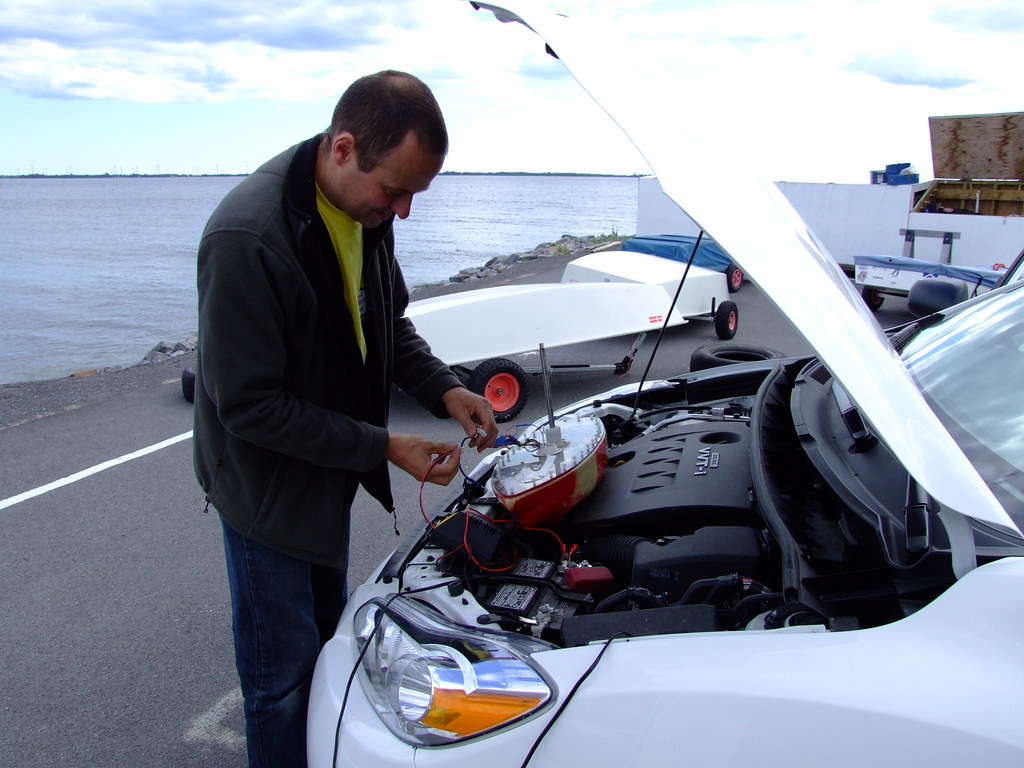
3. **Signs Your Hybrid Battery Is Going Bad**
Unlike a sudden, catastrophic failure, hybrid batteries typically degrade slowly over time, offering several warning signs before they completely give out. Recognizing these symptoms early can provide valuable time to plan for replacement and avoid being stranded. It is rare for a hybrid battery to simply stop working unexpectedly one day, despite occasional reports that might suggest otherwise. Instead, a gradual decline in performance and efficiency often signals an impending issue, making it essential for owners to be vigilant.
One of the most common indicators of a failing hybrid battery is a noticeable drop in the vehicle’s overall performance. Drivers might experience sluggish acceleration, where the car struggles to achieve or maintain speed, particularly during demanding situations. This lack of responsiveness during acceleration is a direct consequence of the battery’s reduced ability to provide adequate power to the electric motor and assist the gasoline engine. A 2020 study by Toyota indicates that such performance drops can begin as early as five years for some hybrid models, underscoring the importance of paying attention to subtle changes.
Reduced fuel efficiency is another critical symptom that should not be overlooked. Hybrid vehicles are designed to optimize fuel usage by seamlessly switching between electric and gasoline power, or using both in combination. When the battery’s capacity diminishes, the gasoline engine may need to run more frequently and for longer durations to compensate for the lack of electrical assistance. This increased reliance on the gasoline engine directly leads to a noticeable increase in fuel consumption and a decrease in miles per gallon (MPG). A report from the U.S. Department of Energy highlights that this degradation can result in fuel efficiency losses of 20% or even more.
Dashboard warning lights serve as an essential communication tool between your vehicle and you, the driver. The illumination of a specific hybrid battery warning light or even the general ‘check engine’ light often signals a problem with the battery or its management system. The National Highway Traffic Safety Administration (NHTSA) strongly advises against ignoring these indicators, as doing so could lead to more severe and costly problems down the road. Additionally, drivers may notice unusual smells or sounds emanating from the battery area. Strange odors could suggest battery leakage or melting components, while unusual noises, such as whining, clicking, or buzzing, might signal internal damage within the battery pack. According to a 2019 case study by Battery University, physical indicators like these should never be disregarded, as they can sometimes point to serious safety hazards. For plug-in hybrid owners, changes in charging habits are particularly telling. If the vehicle takes significantly longer to recharge than it used to, or if it discharges more rapidly than normal, these are strong signals that the battery’s health is declining. Research from the Automotive Battery Consortium shows that these signs can often precede total battery failure, making early detection vital for proactive maintenance.
Read more about: Your Definitive 2025 Guide: What to Check When Buying a Used Electric Vehicle
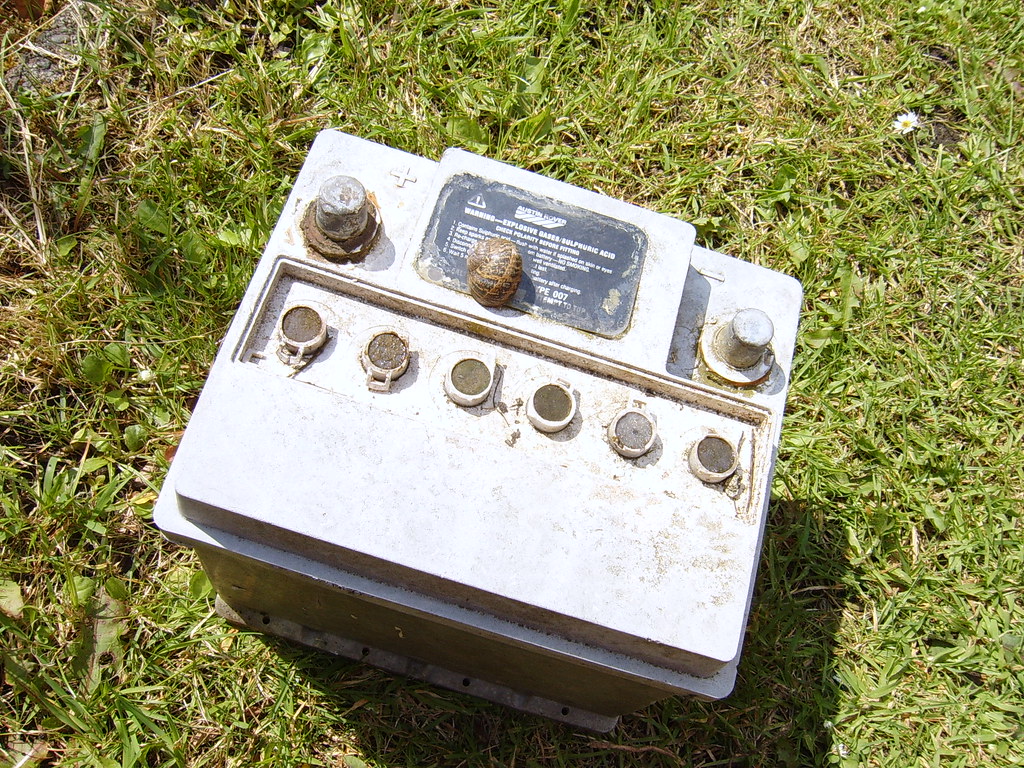
4. **How to Identify Potential Issues with Your Hybrid Battery**
Beyond simply recognizing the general signs of a degrading battery, there are proactive steps hybrid owners can take to identify potential issues with their hybrid battery system. By diligently monitoring various aspects of their vehicle’s operation and utilizing available tools, drivers can often detect problems early, which can be crucial for mitigating costly repairs or unexpected breakdowns.
Firstly, consistent monitoring of your vehicle’s performance is paramount. Pay close attention to any substantial drops in fuel efficiency. A significant decrease in miles per gallon is often a strong indicator that the hybrid battery is no longer holding a charge effectively or assisting the gasoline engine as it should. Studies indicate that hybrid batteries naturally lose capacity over time, with some models experiencing a notable 20% decline within as little as five years, as noted by Harris in 2020. Keeping a regular log of your fuel economy can provide a valuable baseline to detect these changes.
Secondly, observing your vehicle’s dashboard warning lights is an essential and immediate step. Most hybrid vehicles are equipped with a specific indicator light designed to signal issues with the battery or its intricate management system. If this particular light illuminates, it strongly suggests a problem that requires prompt attention. Even a general ‘check engine’ light, when accompanied by other performance issues unique to hybrid systems, warrants further investigation.
Thirdly, it’s advisable to check for any unusual sounds originating from the battery area. Hybrid batteries and their cooling systems operate quietly under normal circumstances. Therefore, listening for any unexpected whining, clicking, or buzzing noises can be an early alert for electrical issues or even physical damage within the battery pack itself. These auditory cues should prompt a closer inspection by a qualified technician.
Lastly, conducting regular diagnostics is a powerful tool for identifying potential issues. Many modern hybrid vehicles come with sophisticated built-in diagnostic tools that can assess the health and performance of the battery. Utilizing these tools, either through your vehicle’s onboard system or by visiting a service center equipped with specialized diagnostic equipment, can reveal specific error codes or alerts related to battery performance. This early detection capability allows for targeted interventions, potentially saving on more extensive and expensive repairs down the line by addressing problems before they escalate.
Read more about: Your Definitive 2025 Guide: What to Check When Buying a Used Electric Vehicle
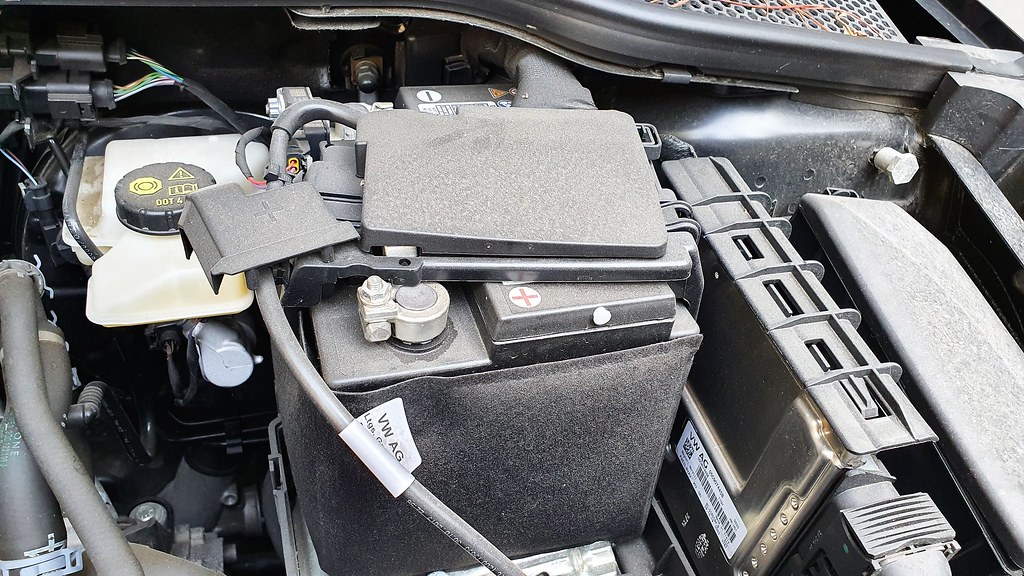
5. **Steps to Take If You Suspect Your Hybrid Battery Is Failing**
If you begin to notice the telltale signs that your hybrid battery may be failing, taking immediate and systematic action is critical. Procrastination in addressing these issues can not only lead to further degradation of your vehicle’s performance and efficiency but also potentially result in more expensive repairs or even complete immobility. A structured approach can help diagnose the problem accurately and guide you toward the most appropriate solution.
The initial and most straightforward step is to check the warning lights on your dashboard. Hybrid vehicles are specifically designed with indicators to alert drivers to battery-related issues. For instance, the ‘check engine’ light or a dedicated hybrid system warning light might illuminate when the battery’s performance is subpar. Ignoring these visual cues can mask a developing problem, potentially causing further damage to other components of your vehicle’s complex hybrid system. These lights are your vehicle’s primary method of communicating a critical concern, and they should be heeded without delay.
Concurrently, diligently monitor any decreases in your vehicle’s fuel efficiency. A sudden and unexplained drop in miles per gallon is a strong indicator that the hybrid battery is no longer effectively assisting the gasoline engine. As reported by the Department of Energy, such a decline in fuel economy often points directly to battery degradation, as the gasoline engine is forced to work harder to compensate for the battery’s diminished capacity. By tracking your fuel consumption, you can establish a baseline and quickly identify deviations that signal trouble.
Assessing the vehicle’s overall performance is also crucial. Drivers might observe that their hybrid feels less responsive than usual, or they may experience sluggish acceleration. Unusual noises during startup or while the electric motor is engaged can also signal a failing hybrid battery. These performance anomalies warrant immediate investigation, as they directly impact the driving experience and can indicate underlying issues that require professional attention to prevent further complications. A healthy hybrid should offer smooth transitions and consistent power delivery.
To gain a more precise understanding of the issue, utilize a diagnostic tool. Many automotive parts stores offer free diagnostic checks, where they connect a device to your vehicle’s OBD-II port to read error codes. These codes can provide specific information related to battery performance, helping to confirm if the battery is indeed the root cause of the problems you are experiencing. This data-driven approach can save time and narrow down potential culprits before visiting a mechanic, offering a preliminary assessment of your battery’s health.
Consulting with a professional mechanic who specializes in hybrid vehicles is an indispensable step. Experienced hybrid technicians possess the expertise and specialized equipment necessary to conduct a comprehensive diagnostic of the entire hybrid system. They can perform detailed tests on the battery’s voltage, state of charge, and overall health to accurately determine if replacement is necessary. Their expert assessment is vital for making an informed decision, as they can differentiate battery issues from other potential vehicle problems and provide reliable recommendations.
Finally, if battery failure is confirmed, it becomes important to consider the various battery replacement options available. New batteries, while offering superior performance and longevity, typically come with a premium price tag, with costs varying significantly based on the make and model of your hybrid. Alternatively, refurbished or aftermarket options are often available at different price points, providing more budget-friendly alternatives. It is equally important to research any existing warranty coverage for your battery. Many hybrid vehicles include a warranty that covers the battery for a specified period or mileage, and understanding these terms can significantly offset the cost of repair or replacement. By following these comprehensive steps, owners can effectively navigate the challenges associated with a failing hybrid battery, ensuring timely interventions and maintaining the efficiency and performance of their vehicle.
Read more about: Buyer Beware: 10 Electrical Gremlins That Can Plague Luxury Cars Before 50,000 Miles

6. **Factors Influencing Hybrid Battery Replacement Costs**
The cost of replacing a hybrid battery is far from a fixed figure; it is a complex calculation influenced by numerous variables. Understanding these key factors is essential for any hybrid owner or prospective buyer to accurately budget and make informed decisions regarding their vehicle’s long-term maintenance. Each element contributes to the overall expense, creating a diverse range of potential costs that can surprise the unprepared.
One of the most significant determinants of replacement cost is the battery type itself. As previously discussed, hybrid vehicles utilize either nickel-metal hydride (NiMH) or lithium-ion (Li-ion) technologies. Generally, lithium-ion batteries are more expensive to produce and, consequently, more costly to replace, although they offer superior performance and longevity. According to the U.S. Department of Energy (2021), battery costs can range widely, from $2,000 to $8,000, depending on the specific technology employed. For example, popular models like the Toyota Prius often use NiMH batteries, which typically incur lower replacement costs compared to premium vehicle brands such as Tesla, which predominantly rely on more advanced and expensive lithium-ion technology.
The specific make and model of your vehicle also directly impact replacement costs. Manufacturers often design batteries unique to their vehicle systems, which can limit availability and drive up prices. Luxury vehicles or those equipped with highly advanced technology may require more expensive, specialized batteries. For instance, replacing a battery for a Honda Accord hybrid might range from $2,500 to $3,500, whereas a luxury brand like BMW could see costs exceeding $7,000. A 2022 study by Consumer Reports highlighted that certain models exhibit a higher prevalence of battery replacement, further influencing the typical costs associated with those particular vehicles. Additionally, the battery’s capacity, measured in kilowatt-hours (kWh), plays a role; larger capacity batteries generally cost more to replace.
Labor costs represent another substantial portion of the overall expenditure. The wages for mechanics can vary significantly based on geographic location and whether the service is performed at a dealership or an independent repair shop. Dealerships typically charge premium rates, with a routine battery installation potentially costing over $500 in labor alone. Independent mechanics may offer more competitive pricing, but it’s crucial to ensure they have the necessary expertise for hybrid systems. RepairPal estimates that labor alone can add an average of $200 to $700 to the total bill, influencing how budget-conscious consumers choose their service options.
Warranty coverage and extended service plans can significantly moderate replacement costs. Many hybrid vehicles come with federally mandated warranties that cover battery replacements, often for 8 years or 100,000 miles, with some manufacturers offering 10-year/100,000-mile coverage. Certain U.S. states, known as CARB states for adopting California Air Resources Board standards, require even more extensive coverage—10 years or 150,000 miles for EVs and hybrids. Owners who benefit from such coverage can save substantially, while those without these protections face the full cost. For example, the warranty for a Nissan Leaf specifically covers battery replacement. A 2023 report by AutoWeek notes that many consumers opt for extended warranties to mitigate unexpected repair expenses.
Finally, recycling and disposal fees add to the total cost of hybrid battery replacement. Proper disposal of old batteries is subject to strict environmental considerations and regulations due to the hazardous materials they contain. These fees can average around $100 to $200. Regulations under the Resource Conservation and Recovery Act (RCRA) mandate the proper recycling of lithium-ion batteries, contributing to the overall costs involved. The Environmental Protection Agency (EPA) emphasizes safe disposal practices, which often guides consumer decisions toward certified service providers for replacements. Geographic location also impacts overall pricing, as labor costs and part availability fluctuate considerably between regions, with larger metropolitan areas generally having higher labor rates and some states having specific regulations or incentives related to hybrid battery replacements.
Read more about: Navigating the 2025 Car Warranty Changes: A Consumer Reports Guide to Protecting Your Used Car Investment

7. **What Is the Typical Price Range for Replacing a Hybrid Battery?**
When facing the prospect of a hybrid battery replacement, one of the most immediate and impactful questions for any owner is about the cost. While it’s certainly a significant investment, understanding the typical price ranges can help set realistic expectations and allow for better financial planning. According to the U.S. Department of Energy, a hybrid battery replacement can typically cost anywhere from $1,500 to $8,000. This wide spectrum reflects the diverse factors at play, from the vehicle’s specific model to the type of battery technology it employs.
This considerable range directly reflects the differences in performance, longevity, and advanced technology incorporated into various hybrid batteries. For instance, a battery designed for a high-performance luxury hybrid will naturally command a higher price than one for a more common, entry-level model. While the peak of this range can seem daunting, the Automotive Battery Research Group notes that the average cost for replacing a hybrid battery hovers around $3,000, offering a more common benchmark for many vehicle owners.
It is also important for consumers to consider market trends. With the rising demand for hybrid vehicles globally, battery costs are not static; they are anticipated to increase. Projections suggest a potential rise of 20% in battery costs over the next five years. This forward-looking perspective underscores the importance of proactive maintenance and informed decision-making to mitigate future expenses.
Replacing a hybrid battery has far-reaching implications that extend beyond the immediate financial outlay. A healthy battery significantly impacts vehicle performance, enhancing fuel efficiency and reducing emissions, which in turn contributes to healthier ecosystems by lessening reliance on fossil fuels. From a consumer perspective, a sound battery maintains the car’s resale value and reduces operational costs, offering tangible economic benefits throughout the vehicle’s lifespan. To effectively manage these costs, publications like Hybrid Cars emphasize the importance of regular maintenance and proper usage, coupled with practices such as regenerative braking and optimal charging, to extend battery life.
Read more about: Are EVs Really Worth It? The 13 Downsides Nobody Tells You About Before You Buy

8. **What Are Your Options When Replacing a Hybrid Battery?**
When a hybrid battery reaches the end of its operational life, owners are presented with several distinct choices for replacement. These options vary significantly in terms of cost, expected longevity, and the level of risk involved. Understanding each alternative thoroughly is crucial for making an informed decision that aligns with your budget and long-term vehicle ownership goals. The most common pathways include purchasing a brand-new battery, opting for a refurbished unit, investing in a remanufactured battery, or exploring aftermarket alternatives.
The first and often most straightforward option is to purchase a new, original equipment manufacturer (OEM) battery. These batteries are sourced directly from the vehicle manufacturer or a certified distributor, ensuring peak performance and full compatibility with your specific hybrid model. New batteries provide the highest level of reliability and typically come with comprehensive warranty coverage, offering considerable peace of mind. A 2022 Consumer Reports study highlighted that new hybrid batteries generally last between 8 to 10 years and consistently deliver enhanced performance, though they represent the most expensive choice, often costing between $2,000 and $3,500 depending on the vehicle’s make and model.
A more budget-friendly alternative is a refurbished battery. This option involves acquiring a used battery that has undergone testing and restoration to bring it back to a good working condition. While significantly more cost-effective, typically priced between $1,000 and $2,000, refurbished batteries introduce a degree of unpredictability regarding their future lifespan. Their operational history is often unknown, and a 2021 study by Battery University indicated that refurbished units might only deliver 50-75% of the lifespan of a brand-new battery. This makes them an appealing choice for consumers with tighter budgets, but with an inherent trade-off in guaranteed longevity.
Sitting as a middle ground between new and refurbished options are remanufactured batteries. These units undergo a more comprehensive refurbishing process than simply being “tested and restored.” Reputable companies replace defective cells and components with new ones, ensuring the battery pack meets specific performance standards. Priced around $1,500 to $2,500, remanufactured batteries often come with their own warranties, which typically range from one to three years. A 2020 Automotive Technology Journal article suggests that if sourced from reputable vendors, remanufactured batteries can perform quite similarly to new ones, offering a compelling balance of cost and reliability.
Finally, owners can explore aftermarket alternatives, which are third-party batteries not produced by the original vehicle manufacturer. These options are often the most economical, with prices frequently falling below $1,000, making them highly attractive for those prioritizing upfront savings. However, the quality and compatibility of aftermarket batteries can vary dramatically. A 2020 report from the Department of Energy cautioned that these batteries might not integrate as seamlessly with the vehicle’s complex systems, potentially leading to unforeseen performance issues. Therefore, consumers considering this route must exercise extreme caution, conducting thorough research into the vendor’s reputation and product reviews before committing to a purchase.
Read more about: Are EVs Really Worth It? The 13 Downsides Nobody Tells You About Before You Buy

9. **How Do New, Remanufactured, and Used Hybrid Batteries Compare Regarding Cost?**
The decision of which hybrid battery replacement option to choose largely hinges on a careful comparison of cost, anticipated performance, and the security of a warranty. Each category—new, remanufactured, and used—presents a unique value proposition, with new batteries almost universally occupying the highest tier of expense. Understanding these distinctions is fundamental to making a financially sound and functionally appropriate choice for your vehicle.
New hybrid batteries, as expected, command the highest upfront costs. Pricing can widely vary, often ranging from $1,000 to $6,000, depending significantly on the specific make and model of the vehicle, as Parker noted in 2022. This premium price is justified by several factors: new batteries come directly from the manufacturer, guaranteeing optimal performance and the longest expected lifespan. Crucially, they are accompanied by comprehensive manufacturer warranties, frequently spanning 8 to 10 years, which adds substantial long-term value and peace of mind to the investment.
Remanufactured hybrid batteries offer a compelling middle ground, striking a balance between cost and reliability. Their pricing typically falls between $1,500 and $3,500, as documented by Johnson in 2021. These batteries are carefully restored from used units, with defective cells and components replaced to bring them to a condition akin to new. While they generally provide reliable performance, their warranty coverage is typically shorter than that of new batteries, often ranging from 6 months to 3 years. This reduced warranty influences their perceived risk and overall long-term value, requiring buyers to weigh the upfront savings against potentially earlier replacement needs.
Conversely, used hybrid batteries represent the most economical option, with prices often ranging from $400 to $1,500. This affordability, however, comes with substantial risks that should not be underestimated. As Smith highlighted in 2023, these batteries may have an undetermined amount of wear and a very limited lifespan remaining. Sourced typically from vehicles involved in accidents, their history is often opaque, and their future performance highly uncertain. Crucially, used batteries generally lack the warranty protections that accompany new and remanufactured options, meaning any issues post-purchase could lead to additional, unexpected costs if a swift replacement becomes necessary.
In essence, the choice boils down to a fundamental trade-off. New batteries offer maximum peace of mind through longevity and extensive warranties, albeit at the highest price point. Remanufactured batteries provide a sensible compromise, balancing affordability with a reasonable level of reliability and some warranty protection. Used batteries, while significantly cheaper, demand a high degree of caution due to their inherent risks and lack of guarantee, making them a gamble best avoided unless one is highly risk-tolerant and on a very strict budget.
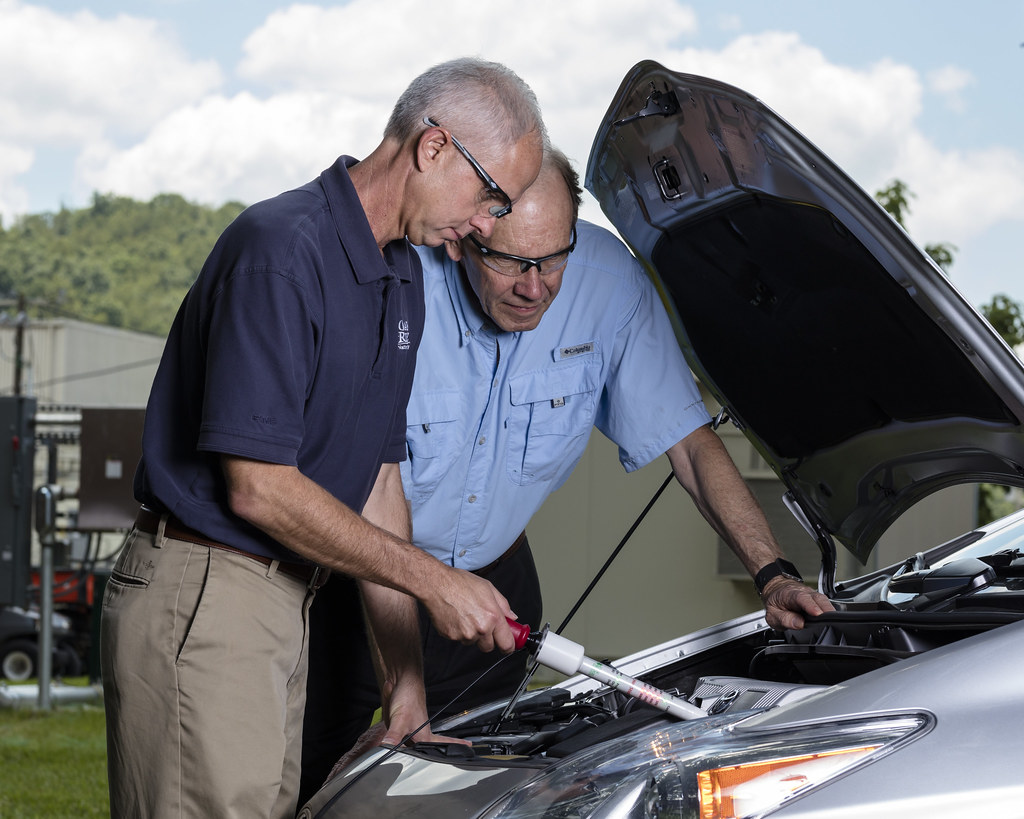
10. **What Warranties Are Available When You Replace Your Hybrid Battery?**
Understanding the warranty landscape for hybrid battery replacements is just as critical as knowing the initial cost. Warranties provide a crucial layer of financial protection, covering potential defects and ensuring that your significant investment is safeguarded. These protections typically extend to the battery itself, the labor involved in its installation, and any ancillary parts used during the replacement process, though the specifics can vary widely depending on the manufacturer and the service provider. Familiarizing yourself with the different types of warranties available empowers you to choose the coverage that best fits your needs and preferences.
The most fundamental form of protection is the manufacturer’s warranty, which is provided directly by the carmaker. For hybrid vehicles, this warranty typically covers defects in materials and workmanship for a set duration, such as 8 to 10 years, or up to a specific mileage, commonly 100,000 miles. The U.S. Department of Transportation emphasizes that these warranties are designed to build consumer confidence in the long-term durability of hybrid battery systems. Federally mandated requirements ensure a baseline of coverage, with some states adopting even more extensive guarantees, as seen in CARB states that mandate 10 years or 150,000 miles for EVs and hybrids.
Beyond the standard manufacturer coverage, an extended warranty can be purchased to provide additional protection. This option becomes particularly attractive as the original warranty period nears its end, offering several more years of coverage. While extended warranties can encompass more comprehensive aspects of battery performance, a study by Consumer Reports advises that their cost and specific coverage terms can vary significantly. Therefore, it is imperative for consumers to meticulously review the fine print to understand precisely what is covered and what limitations might apply before making a purchase.
When a battery replacement involves professional installation, a labor warranty is often provided by the service center. This warranty specifically covers the costs associated with the installation process itself, protecting you from potential expenses if issues arise due to faulty workmanship. Typically lasting from one to several years, labor warranties are commonly offered by reputable service departments, particularly at dealerships, as noted by the National Automotive Dealers Association. This assurance ensures that the service performed meets professional standards and that any rectifications for installation errors will not incur additional costs for the owner.
Finally, a parts warranty specifically covers any new components that are used during the hybrid battery installation, aside from the main battery pack itself. The duration and scope of this warranty can vary; some manufacturers align the parts warranty with the main battery warranty, while others may have different conditions. It is always prudent to inquire about the specific details of any parts warranty at the time of service. This ensures that every component contributing to the overall battery system is adequately covered, preventing unexpected costs should a peripheral part fail prematurely. Each of these warranty types plays a vital role in providing peace of mind and financial security for hybrid vehicle owners.
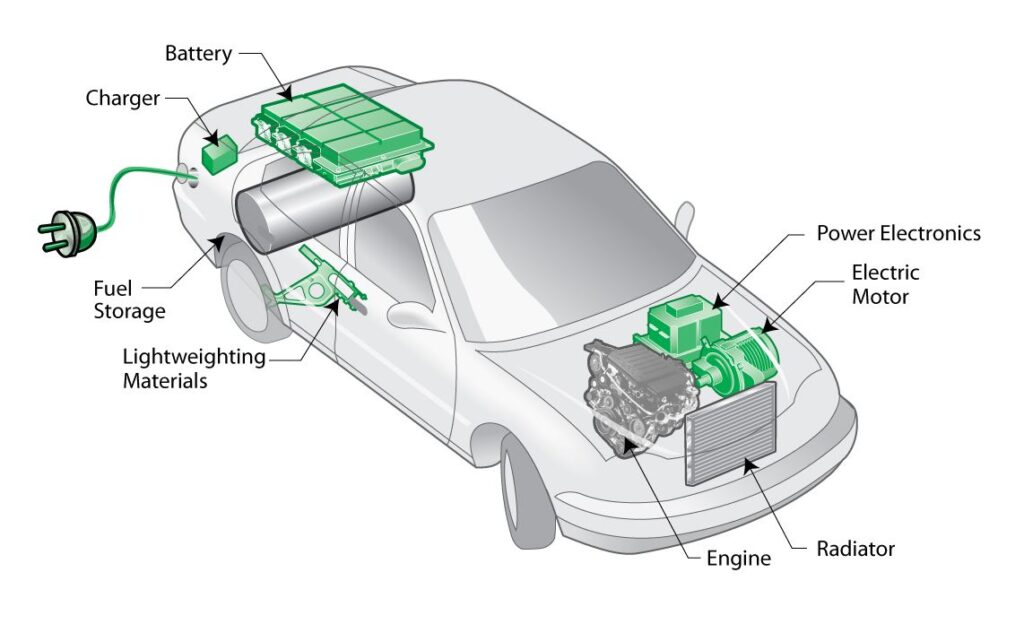
11. **Is It Worth It to Replace a Hybrid Battery?**
The decision to replace a hybrid battery is a significant one, prompting owners to carefully weigh the immediate costs against the long-term benefits and the overall health of their vehicle. This evaluation goes beyond simple economics; it considers the car’s remaining lifespan, the extent of other potential issues, and the owner’s commitment to hybrid technology. Replacing the battery can undoubtedly restore a car’s efficiency and performance, but it’s not always the best path for every aging hybrid.
If the faulty propulsion battery is the sole significant problem with an otherwise well-maintained vehicle, replacement is almost certainly a worthwhile investment. A new or quality remanufactured battery can effectively “rejuvenate” the hybrid, bringing back its original fuel economy and responsive power delivery. This not only extends the useful life of the car but also allows the owner to continue benefiting from the environmental and economic advantages that hybrid driving offers, making the substantial expense a sound decision for preserving a valuable asset.
However, the calculation shifts if the hybrid is an older model already experiencing a multitude of unrelated issues, such as transmission problems, significant rust, or other major mechanical failures. In such cases, pouring thousands of dollars into a new battery might be akin to “throwing good money after bad.” Owners must honestly assess the total cost of ownership, including the battery replacement and any other anticipated repairs, against the current market value of the vehicle. Sometimes, the more financially prudent decision is to sell the vehicle for parts or trade it in, rather than continue investing in a car nearing the end of its overall service life.
Conversely, for potential buyers scouting the used car market, an older hybrid with a confirmed failing battery can sometimes represent a unique opportunity. Such vehicles are often listed at significantly lower prices precisely because of the impending battery replacement cost. For a savvy buyer willing to invest in a new or remanufactured battery, this situation allows them to acquire an otherwise solid vehicle at a bargain, effectively “resetting” the most expensive wear component. By performing this critical upgrade, they can potentially enjoy many more years of reliable, fuel-efficient driving from a vehicle that, after the battery replacement, performs like a much newer model. Ultimately, the worth of replacing a hybrid battery hinges on a comprehensive assessment of the individual vehicle’s condition, the owner’s financial capacity, and their long-term automotive plans.
Read more about: Are EVs Really Worth It? The 13 Downsides Nobody Tells You About Before You Buy
As we’ve journeyed through the intricate world of hybrid battery replacement, from understanding the various options and their costs to navigating warranty protections and weighing the ultimate worth of such an investment, one clear message emerges: preparedness is paramount. Hybrid vehicles offer undeniable benefits, and with the right knowledge and proactive approach, the perceived “scary” cost of battery replacement can be managed effectively. By diligently doing your homework, monitoring your vehicle’s health, and making informed choices tailored to your specific situation, you can ensure your hybrid continues to serve you efficiently and economically for years to come, truly embodying the spirit of smart, sustainable driving.

